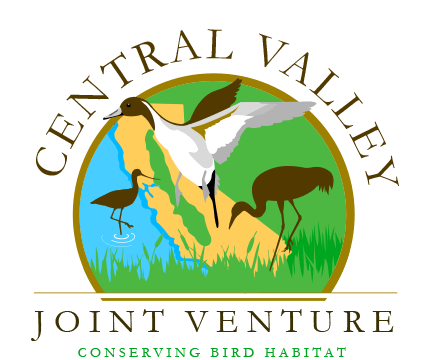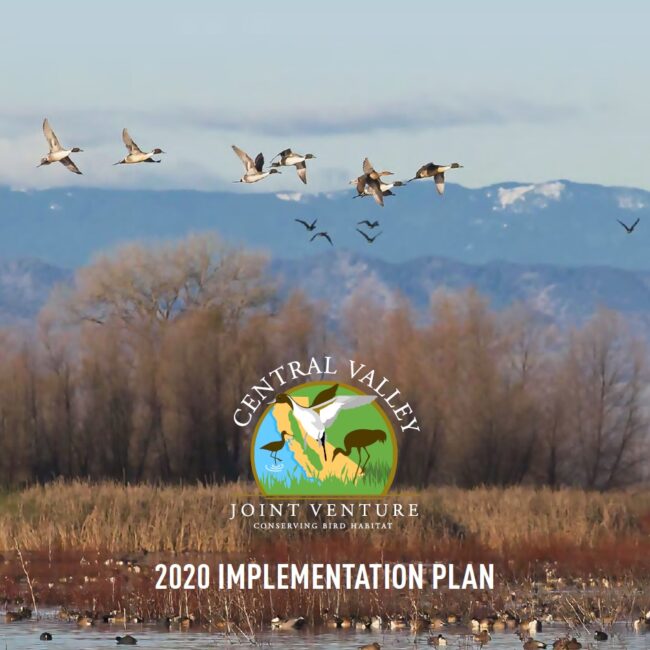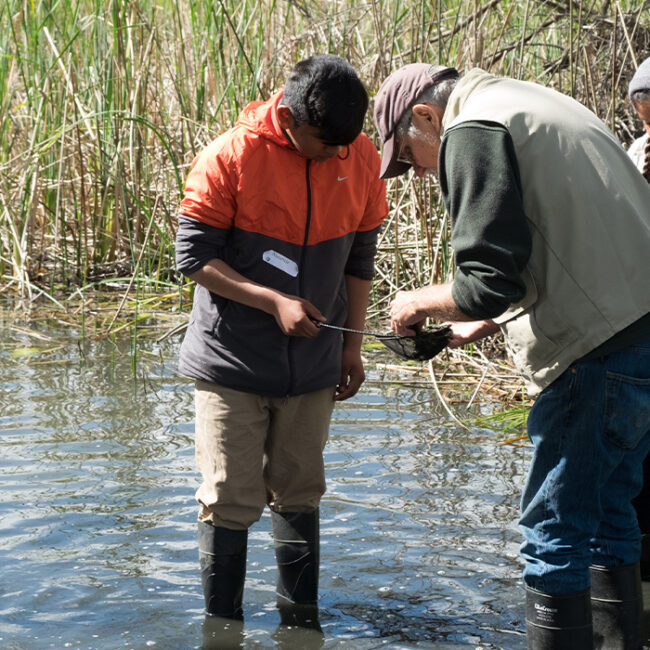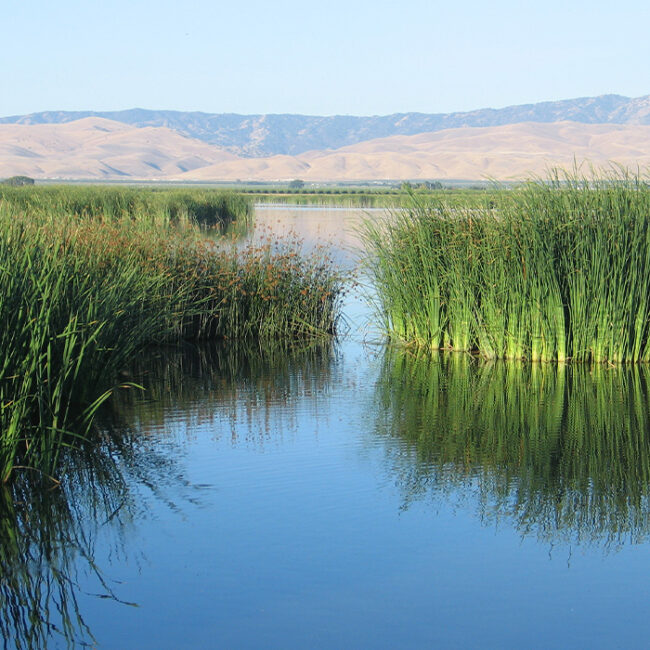Monitoring & Evalution Plans
These monitoring and evaluation plans identify priority information needs necessary to strategically advance conservation planning, and achieve those objectives described in the CVJV Implementation Plan.
Canvasback. Mike Peters
The Central Valley Joint Venture (CVJV) has adopted a strategic, science-based philosophy toward bird habitat conservation and uses a framework called Strategic Habitat Conservation (SHC) to maximize benefits to bird populations while minimizing costs of conservation investments. It encompasses four broad elements: biological planning, conservation design, delivery of conservation actions, and monitoring and evaluation. SHC moves wildlife conservation beyond the opportunistic and into the strategic realm, using an adaptive framework to ensure that learning enhances future conservation efforts.
The development and completion of this Science and Knowledge Needs document follows the release of the CVJV 2020 Implementation Plan (2020 Plan). The 2020 Plan included several elements of SHC, notably biological planning and conservation design, and provided some guidance for conservation delivery. The 2020 Plan was developed using the best available science, as directed by the predecessor of this document, the 2010 CVJV Monitoring and Evaluation (M&E) Plan. In the spirit of innovation and adaptive management, this Science and Knowledge Needs Plan represents a more comprehensive assessment. It is intended to evaluate progress toward the biological objectives and to test whether the conservation strategies and actions yield the intended ecological and social outcomes. The iterative process of testing biological assumptions to improve conservation planning and delivery is germane to the SHC process, and it bridges the gap between managers and researchers.
You can also find an extensive list of associated reference below.
The Central Valley of California supports one of the largest wintering shorebird populations of any inland site in North America and also sustains widespread breeding populations of black-necked stilts, American avocets, and killdeer. In addition, large and varied populations of waterbirds (egrets, herons, ibis, bitterns, rails, grebes, pelicans and cormorants) also depend on the Central Valley during the wintering and breeding periods While shorebird and waterbird conservation was not targeted in the original 1990 Central Valley Habitat Joint Venture Implementation Plan, these bird groups undoubtedly benefited from many of the habitat conservation achievements generated by the plan. The Monitoring & Evaluation Plan for Shorebirds and Waterbirds consists of the highest priority information needs to advance conservation planning and implementation in the Central Valley Joint Venture.
The Central Valley of California has lost over 98% of its riparian habitat in the past 150 years and riparian habitat loss may be the most important cause of population declines among songbird species in western North America. Several once common species are now extirpated from the Central Valley. The Central Valley Joint Venture is seeking to reverse this decline, and in its 2006 Implementation Plan has developed population objectives for a suite of focal species. This monitoring and evaluation plan addresses information needs of the 2006 Implementation Plan in order to strengthen the capacity of the CVJV to set targets and evaluate success in its effort to recover riparian songbird populations.
The Monitoring & Evaluation Plan for wintering waterfowl consists of the highest priority information needs to advance conservation planning and implementation in the Central Valley Joint Venture. The issues in this plan contribute to strengthening the CVJV’s biological foundation by testing key assumptions of the 2006 Implementation Plan, refining bio-energetic models, informing habitat management and evaluating program effectiveness.
The Monitoring & Evaluation Plan for breeding waterfowl consists of the highest priority information needs to advance conservation planning and implementation in the Central Valley Joint Venture. The issues in this plan contribute to strengthening the CVJV’s biological foundation for breeding waterfowl and focus on inventory and assessment of key habitats, and evaluation of the relationship among vital rates, habitat parameters and population response.



